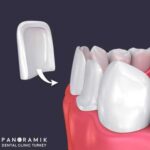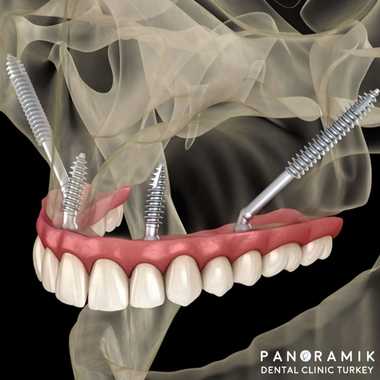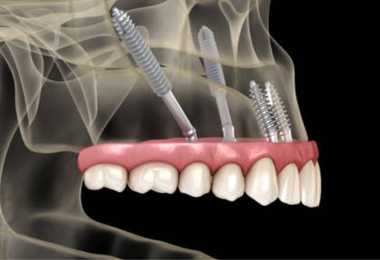
Lumineer Veneers
February 14, 2023
How to Prevent Receding Gums?
August 23, 2023
Zygomatic Implants Treatment Summary

Sensitivity Process
1-2 Days

Persistence of Results
25+ Years

Recovery Time
2-6 Months

Treatment Duration
2-4 Hours
Zygomatic Implants
If you are experiencing possible bone loss problems in the upper jaw line and suffer from missing teeth, zygomatic implants Turkey will be the right choice. Zygomatic implants, which provide great convenience in cases where traditional implant zygomatic cannot be placed due to insufficiency or resorption of the upper jaw bone, offer a permanent solution by replacing missing teeth in the upper jaw line.
What Is a Zygomatic Implants? How Is It Done?
Zygomatic implants Turkey are a type of implant used in the treatment of patients suffering from missing teeth and bone loss in the upper jaw. In this type of implant, the teeth to be placed are not placed in the jawbone, but in the cheekbone, also known as the zygomatic bone. In this way, even if the patient suffers from bone loss, he/she can have a healthy dental appearance without undergoing an additional bone graft treatment.
This type of implant is very durable and robust and can be used for many years. Thus, there are no possible problems with the implants and the patient's oral and dental health is completely protected. In this treatment method, firstly, the area to be treated is locally anesthetized with sedation and prepared for the treatment. Then, small incisions are created to place zygomatic jaw implants. In line with these incisions, zygomatic ımplant are placed in the zygomatic bone. Afterwards, abutments are attached to ensure that the implant is solid. Thus, the tooth is supported with the help of abutments. Finally, when the process is completed, aesthetic sutures are applied to the zygomatic bone.

Image-1: Zygomatic implant
The zygomatic teeth implants surgery takes approximately 2-4 hours and a complete recovery is observed between 2-6 months. During this period, oral care and doctor's recommendations should be considered. This way, you can have a more comfortable and better healing process.
Who Can Receive Implants Zygomatic?
Zygomatic implant, also known as cheekbone implants, can be applied to people over the age of 18 and with severe jawbone loss. The reason for this can be shown as the dental bone structure of patients under the age of 18 is not fully developed. People to whom zygomatic implants Turkey can be applied are as follows;
- People who have experienced intense jaw bone loss,
- Individuals who have had to use dentures for a long time,
- Patients for whom traditional tooth implant methods are inadequate,
- Individuals with jawbone loss as a result of possible accidents and traumas,
- Those who have had a genetic chin graft problem since childhood,
- Patients with advanced jaw bone resorption.
What Are the Zygomatic Implants Pros and Cons?
Powerful treatment method for dental restorations
Cheekbone implants are a powerful treatment method that provides convenience for patients who have difficulty due to bone loss. With cheekbone implants, patients can eat comfortably and smile freely and without hesitation.
It is the right treatment for patients with advanced bone loss
It is a treatment that offers privileges to patients with hereditary or acquired jawbone loss problems in the upper jaw. Because it is used as an alternative treatment method in patients who are not suitable for traditional implant treatment, zygomatic implants are specially prepared for the cheekbone structure of the person and placed in a short time.
Guaranteed to last a long time
Zygomatic implant surgery, if the necessary sensitivity and care is shown, the patient can use it for 25+ years in a healthy way. However, it may be necessary to take into account all necessary care and doctor's recommendations. Otherwise, the desired results may not be achieved.
A more robust treatment than prosthodontics
If advanced jawbone resorption has occurred and even dentures are no longer suitable for use. Zygomatic implants will be the right treatment. In this way, you can have a more robust tooth structure than prosthetic teeth.
What Are the Types of Zygomatic Teeth Implants?
Zygomatic teeth implants are generally available in two different types according to the way they are made:
Standard zygomatic implants
Standard zygomatic implant are long implants that are placed directly into the zygomatic bone and connected to the solid structure of the cheek bone. These implants are used in cases of jawbone insufficiency or enlargement of the maxillary sinuses. Standard zygomatic implant provide strong implant support and make it possible to fix implant-supported prosthetic teeth.
Pterygo zygomatic implants
Pterygoid implants are implants placed in the bone structure called the pterygoid plate in addition to zygomatic implants. These implants may be preferred when zygomatic implants alone are not sufficient or in patients with a different anatomical structure. Pterygo implant zygomatic provide more bone support and ensure stable placement of the implants.
Both types of zygomatic implants are specially designed implants to treat missing teeth. Implant treatment is determined by taking into account the patient's jawbone condition, the area to be implanted and other factors. Your dentist will perform an examination and evaluation to determine the most appropriate type of zygomatic implant in your case.
Zygomatic Implants Treatment Process
-
Control: The jaw bones in the upper jaw line are analyzed in detail. As a result of these analyzes, oral health will be evaluated. As a result of this evaluation, it will be evaluated whether the oral and jaw structure is suitable for the zygomatic implant.
-
Treatment: If you are suitable for treatment as a result of the analyzes, the implants, whose preparation is completed within 3-7 days, are placed between 2-4 hours with the help of small incisions in the cheekbones. Local anesthesia is applied to prevent pain and pain during placement.
-
To Wait: After the zygomatic implants are placed in the cheekbones, it is necessary to wait an average of minimum 2 months and maximum 6 months for the zygomatic implant and cheekbone to fuse.
-
Smile Time: The healing time of zygomatic implants varies according to the care and attention to the points that the person should pay attention to. However, on average, it varies between 2-6 months.
Zygomatic Implants Turkey Cost
Antalya zygomatic implant prices are determined according to the patient's jawbone condition and oral structure after preliminary consultation. Therefore, it would be wrong to say something definite. Because there are many factors in determining zygomatic implant prices. The most important of these factors are the implant brand used, the number of missing teeth of the patient and the duration of treatment.
Zygomatic implants cost in Turkey has a very advantageous position in terms of cost and quality compared to the US, USA and Europe. For this reason, Turkey comes to the forefront when compared to these countries. You can have a professional and quality treatment process by choosing dental clinics that provide quality service in Turkey.
